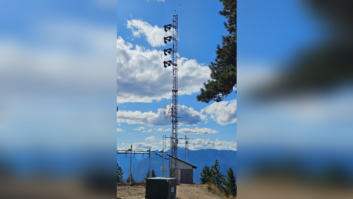Veteran AM engineers have known since the beginning: An antenna needs to be a continuous electrical conductor. Intermittent connections cause real problems, especially with solid-state transmitters that need to see something close to 50 ohms with zero reactance lest they go into VSWR protection mode.
One bad connection can throw the impedance off a little or a lot depending on where the errant connection is. This problem is not just on series-fed towers. A unipole is a “feed system” for an AM tower, and relies on the tower being a continuous radiator too.
Now is the right time to pay careful attention.
A tower is the “radiating element or antenna” for an AM signal, not a support structure as in FM. Towers typically are constructed of stacked 20-foot sections. With tons of downward pull on guy lines, you might think sections would be sufficiently connected to be thought of as a single electrical conductor. Not the case. Towers stand in rain and perhaps salt air. Crippling corrosion happens where each section joins the next.

Typical weld on a solid-leg tower.
I have seen bonding straps that go around joints to remedy the problem. Others have run a heavy copper wire from the top to bottom of a tower. Those work, but a better approach is to weld the sections one to another. Usually this is done by a tower worker with an arc welder.
Do you have all three tower legs welded one to another? Only one good leg connection is required. I usually have the tower climber do two legs; it is convenient to do the two closest ones when he is belted in at each level of the tower. That second leg is insurance.
Welds do not need to be deep, they just need to connect sections electrically and reliably. Standard procedure is for the worker to spray cold galvanizing over the joint to protect it against rust.
Does welding make the tower incapable of being reused later? Not usually. Welds can be ground off before sections are separated.
Does welding last forever? No, tower vibration can crack the welds over time. Don’t be surprised if you must weld again after 20 or 30 years.
FM stations are not immune to intermittent tower connections. With lots of RF radiating into the tower from an FM antenna, corroded connections can cause RF noise that plays havoc with STL systems, especially digital ones. Tower section to section connections are not the only players. Any intermittent cable grounding/bonding connection on the tower can cause the same symptom.
I had an interesting experience in which an AM station would not pass the annual NRSC occupied bandwidth and RF harmonic measurement tests. The sticking point was RF harmonics. Try as I may, I could not tune the transmitter or do anything to fix a second and third RF harmonic radiation problem. It simply would not meet the FCC specification of 73 dB below carrier for 1,000 watts of transmitter power. It is 80 dB for 5,000 watts or more. Section-to-section welding was the answer. After that, the station met specs just fine.
Caution: Best disconnect the AM antenna coupling unit from the tower before welding. The high voltage could damage or destroy a component in the coupling network or transmitter. You’re going to be off the air anyway because of RF radiation danger to the tower worker.
There is a story about a radio station in a foreign land. The station programming irritated the government; so the manager, program director and engineer all were sentenced to death by guillotine. On the appointed day, the manager was placed in the machine and the cord was pulled. The blade came down but stopped one inch from his neck — “divine intervention,” according to witnesses. The manager was set free.
They tried to execute the PD but the same thing happened.
Finally the engineer was put in the machine. Just before they pulled the cord, he exclaimed, “Wait, I see the problem!”
Mark Persons, WØMH, is certified by the Society of Broadcast Engineers as a Professional Broadcast Engineer and has more than 30 years of experience. He has written numerous articles for industry publications over the years. His website is www.mwpersons.com.












